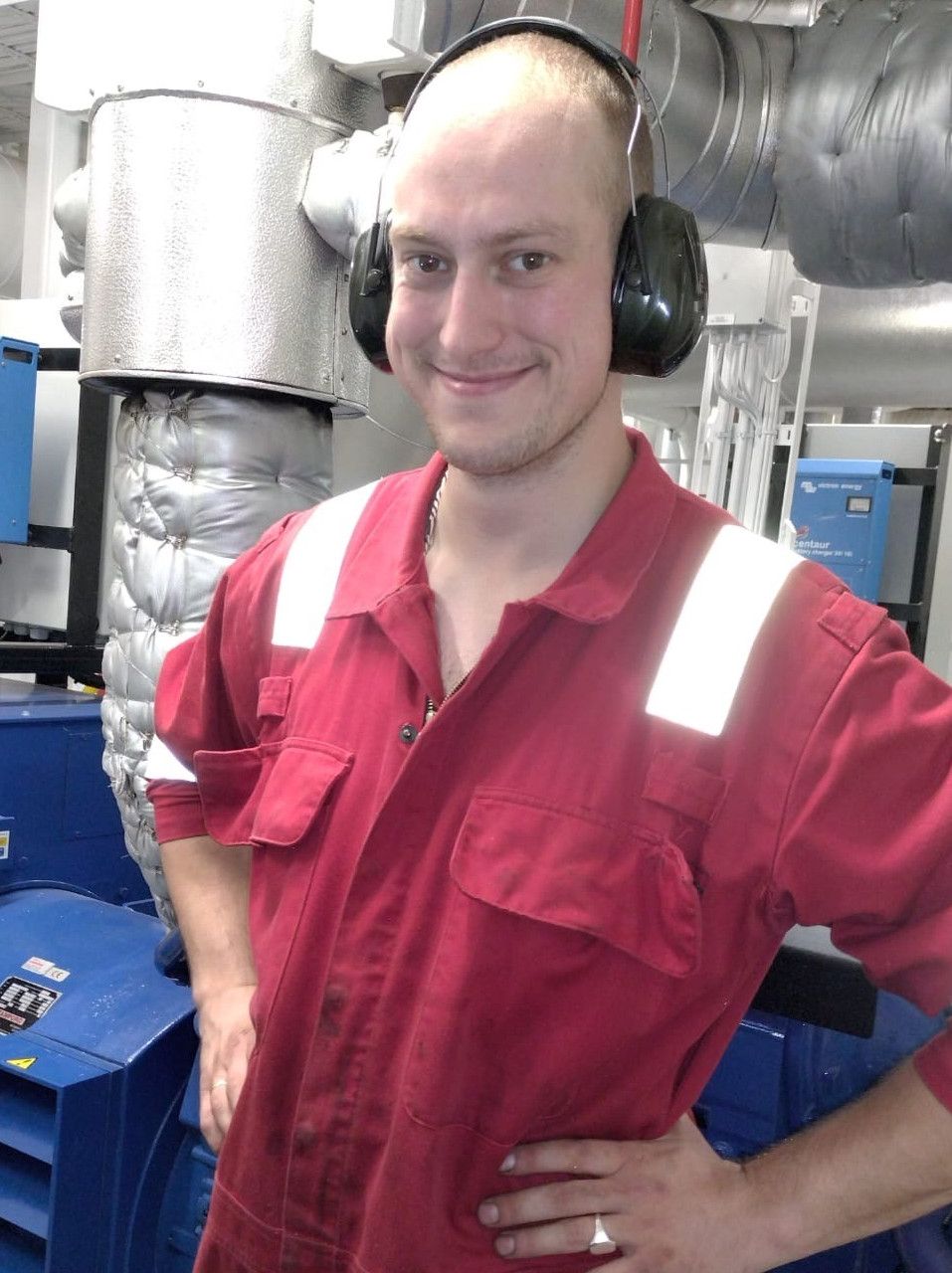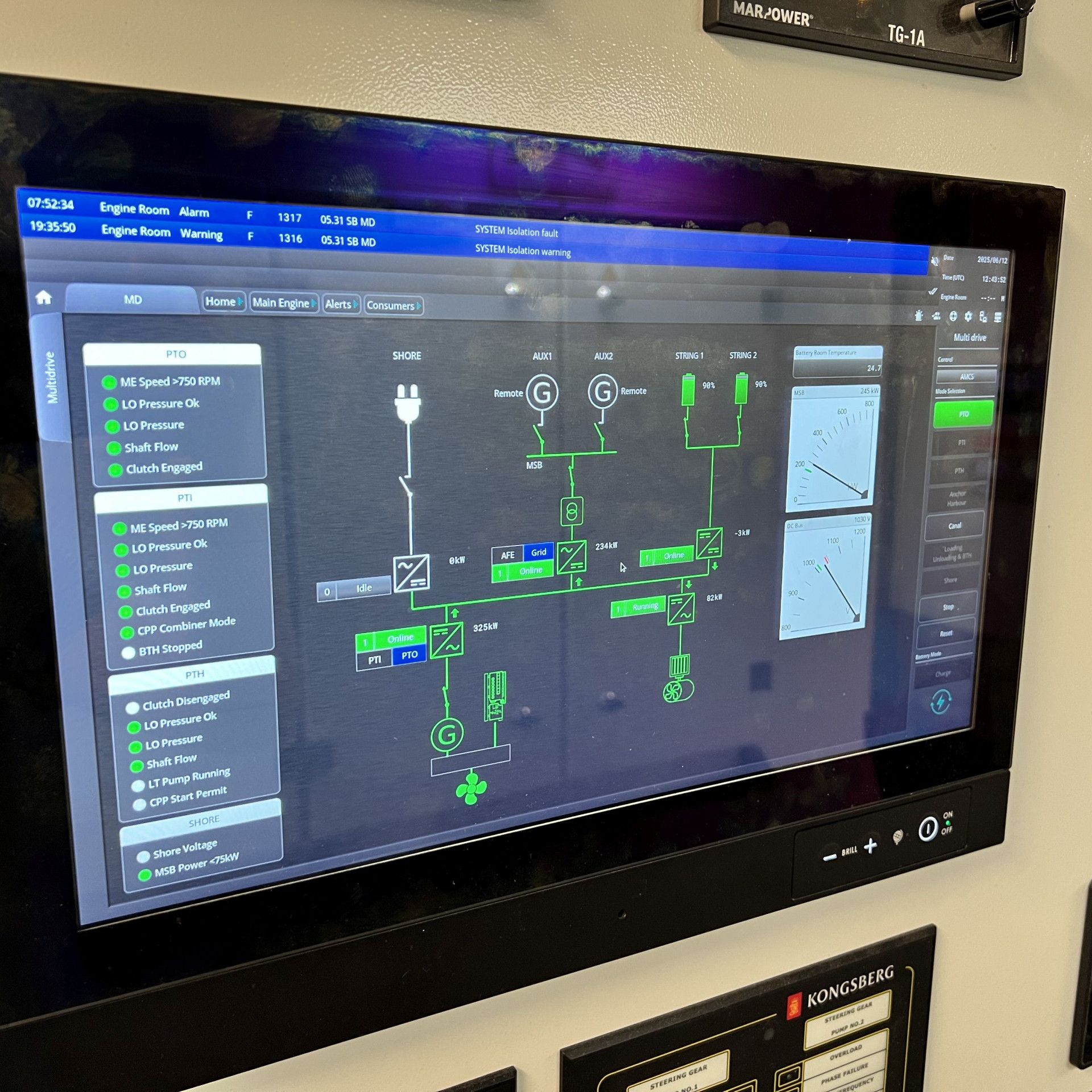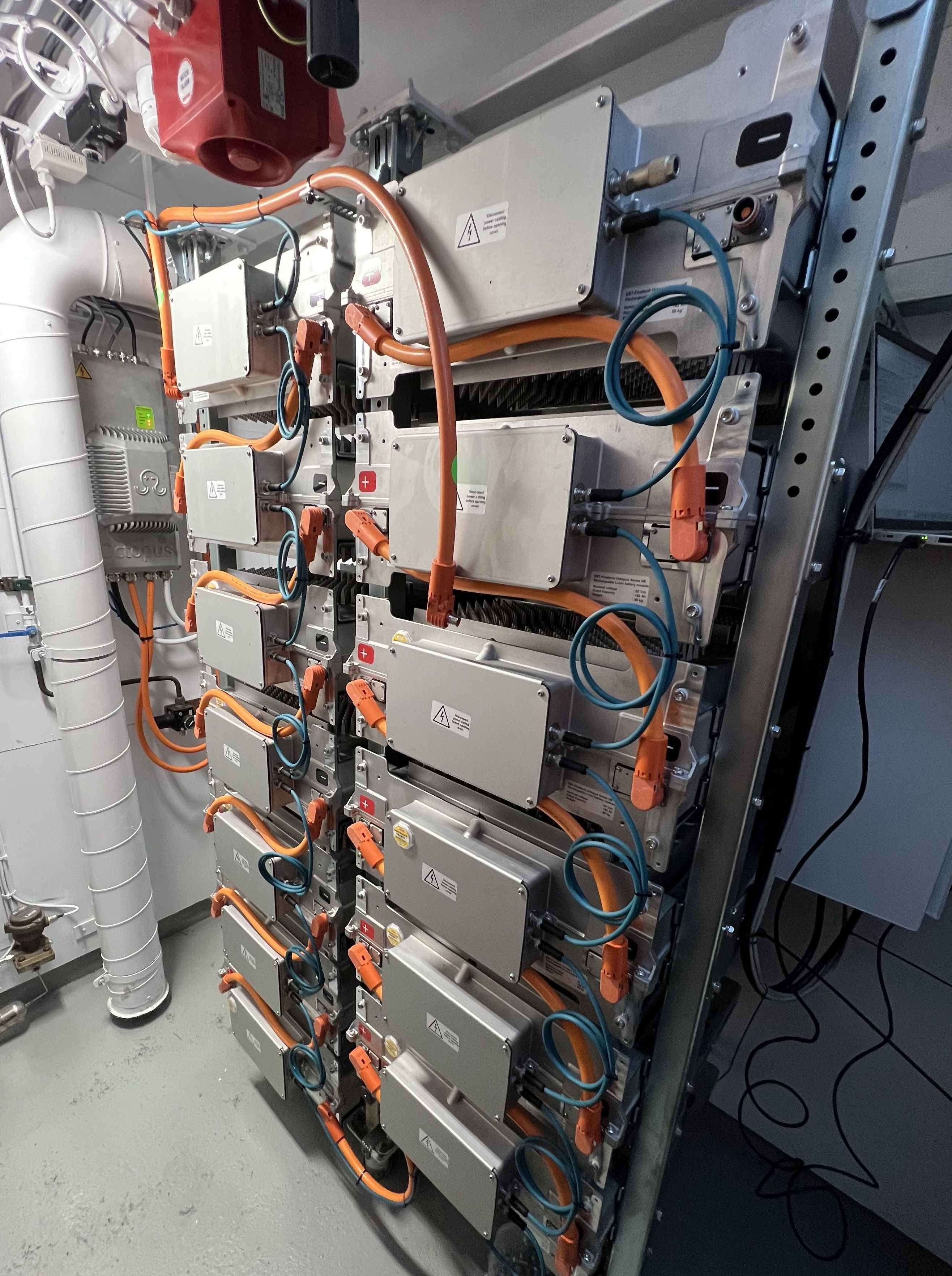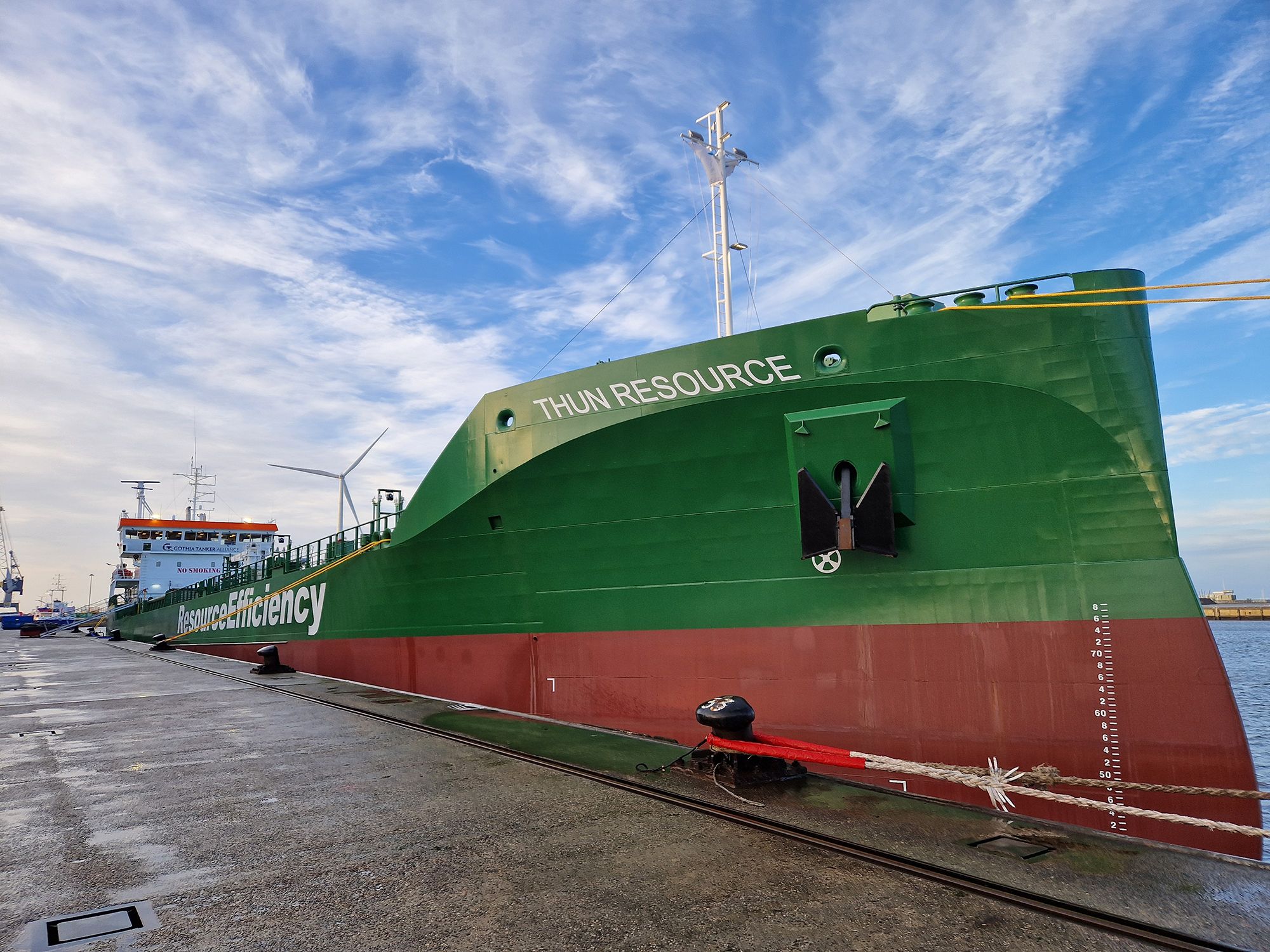
Battery power at sea
Interview with Jeroen Blom, Chief Engineer on board Thun Resource.
As the maritime sector pushes for greener solutions, hybrid and fully electric technologies are finding their way onto more and more vessels. The Thun Resource, which is part of the R-class fleet, has had a battery system in operation for just over six months. In this interview, Chief Engineer Jeroen Blom shares his experiences so far; what works, what doesn't, and what the future might hold.
“In practice, the battery system works quite well,” says Blom, “though there are still a few teething problems, mostly in the software.” Switching between different power modes doesn’t always run smoothly, and the power management system can be unpredictable. “These are bugs we expect to be resolved over time, but for now they’re a bit of a nuisance.”
Despite these minor issues, the overall sentiment remains positive. “Once the kinks are ironed out, the system should meet expectations.”

Although the PTI (Power Take-In) mode has yet to be tested in icy conditions, the battery system already plays a vital role in harbour operations. “We primarily use the batteries for loading and discharging. This allows us to switch between battery power and the generator, so we no longer need the generator to run continuously.”
The impact is noticeable. “There's a real sense of calm on board. The silence and lack of vibration are definite pluses, though it does take some getting used to,” he admits with a smile. “The first few times a pump or generator suddenly kicks in, it’s a bit startling in that silence.”
During unloading, the batteries provide crucial support by covering short bursts of extra load. “This means we can avoid unnecessarily starting a second generator. When the batteries are depleted, the second generator takes over and begins recharging them. During peak operations, the batteries mostly provide peak shaving.”

Cycle time and efficiency
“In practice, we can run for about three to four hours on a single battery cycle, depending on demand. I can’t comment on the original efficiency expectations, but if you consider the bigger picture — fewer generator hours, less maintenance and more efficient operation — I believe it's worthwhile.”
Maintenance is minimal at this stage. “The system is fully automated during day-to-day operations. I check the battery room temperature and system parameters, but beyond that, little intervention is required. There have been no signs of wear or degradation so far. The health status is still at 100%, which is reassuring.”
Monitoring is straightforward. “The MarPower panel gives us an overview, and if needed, we can connect a laptop to view individual battery cells. But, in practice, we rely on the aggregated data.”
Reactions from the crew
The crew's reactions to the new system vary. Some find the alternating silence and sudden noise disorientating, especially when they are woken up by it. Others really appreciate the peace and reduction in vibration. “Personally, I find it helpful, especially in the engine room, where communication is now easier and air leaks can be tracked down more effectively.”
So far, shore power integration is still in its infancy. “Nynäshamn is the only port where we have tested the shore connection. However, due to Swedish holidays and other factors, we haven’t yet had the opportunity to test it properly in combination with the battery system. However, the transition to shore power integration is progressing quickly. The first dry cargo vessels are already required to use shore power in Mariager, Denmark.”
As for onboard energy consumption, there’s room for improvement. “If we actively work on it, we can reduce the hotel load to 50–60 kW, but we typically run at around 70–80 kW. I wouldn’t say I’m doing more than my colleagues on other ships to save energy, it’s just about avoiding unnecessary use wherever possible.”
Safety measures and emergency scenarios
Understandably, safety is a primary concern. “The string controllers continuously monitor for faults. If an issue is detected, the battery is disconnected and will not reconnect until the issue has been resolved. Overcharge protection is in place, and we have a NOVEC system on board for fire suppression, which is similar to CO₂ systems but uses a different agent.”
Of particular concern is thermal runaway, where rising temperatures cause chemical reactions that generate more heat.

“Each battery is housed in an individual box with a rupture disc. If overpressure occurs, it safely vents hazardous gases outside. The system shuts down automatically if such an event is detected.”
Emergency procedures are fairly hands-off. “There’s a manual emergency stop in case the automatic shutdown fails. If thermal runaway occurs, the main danger is from the released gases. These are vented to the aft deck. In theory, the battery room can be flooded, but that should rarely, if ever, be necessary.”
“Generally, the crew is happy. Aside from a few software bugs, the system works well for everyday operations.”
The road ahead
“Generally, the crew is happy. Aside from a few software bugs, the system works well for everyday operations.” Looking to the future, Blom is cautiously optimistic. “Solid-state batteries would be a great next step once the technology has matured, they offer higher energy density, meaning more power in a smaller footprint. That would extend our operating time significantly. Also, we’re still waiting to properly test integration with shore power.”
There is also interest in renewable integration. “It would be great to see options such as solar, wind or waste heat recovery incorporated into the system in future upgrades.”
What about broader electrification across the fleet? “That’s a question better answered by the project department. But from my perspective, it’s a promising direction that will only improve as the technology evolves.”

